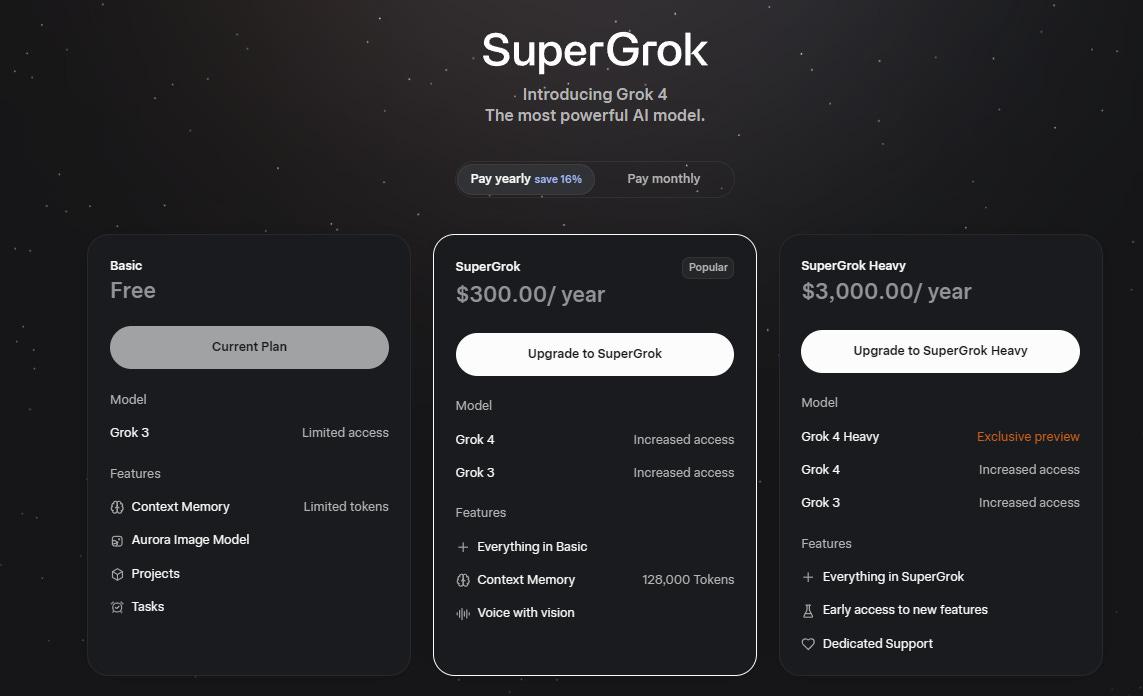Grok-4 in Healthcare: A Post-HIPAA Future of Intelligence
For clinicians, health-system leaders, and patients who demand the next leap in care quality.
Summary
Grok-4 is a frontier-scale, multimodal model trained on ~300,000 H100-class GPUs. Once the last regulatory domino, HIPAA, falls, its real-time reasoning and supercomputer-class latency promise ambient, trustworthy intelligence that augments (not replaces) care teams. Below, we explore why this matters to doctors, hospital leaders, and patients—and what to do now.
1. The Theory Behind Grok-4
PillarKey FactsVisual SuggestionArchitecture & ScaleTrained on ≈ 300,000 NVIDIA H100-equivalent GPUs; 128 k-token context across text, images, signals. Sankey of Grok-4 power draw vs. hospital energy use. Multimodality Native fusion of text, radiology images, waveforms, video, and code. Model-comparison heat map (Grok-4 vs. GPT-4o vs. Gemini 1.5)Synthetic + Real-Time Data Combines 10 T+ synthetic “gold” tokens with continuously filtered Twitter streams—updated weekly. Pie chart of dataset composition. Compute Fabric (Colossus)Supercomputer built in 122 days; first model run 19 days after final rack install. Timeline infographic of build milestones
Why This Matters to You
Clinicians → Point-of-care DDx from mixed text + imaging; no more app-hopping.
Hospital Leaders → Scalable compute enables one AI backbone instead of siloed point solutions.
Patients → Faster, more accurate answers; the model is refreshed with the latest clinical guidance every week.
2. HIPAA as the Final Barrier
Quick reality check
Fragmented PHI silos & incomplete FHIR uptake throttle cross-institutional learning.
Civil penalties ($ 50,000 per violation) keep boards in “default-deny” mode.
Yet, advanced privacy tech (federated RLHF, homomorphic encryption) is now pilot-ready.
Why This Matters to You
Clinicians → Confidence that model fine-tuning won’t expose patient data or your license.
Hospital Leaders → Clear roadmap: HITRUST + SOC 2 attestation paired with NIST privacy-enhancing tech.
Patients → Explicit guardrails keep your data encrypted at rest and in use.
3. Healthcare Applications Unlocked Post-HIPAA
Use CaseSnapshotBenefitsMultimodal Differential DiagnosisUpload CT + note → ranked pathologies with saliency maps and citations.↓ Diagnostic delay, ↓ unnecessary labs. Real-Time Triage Copilot ED chat stream → risk-stratified routing in < 2 s.↓ wait times, ↑ flow efficiency, Hospital Operations Optimizer 7-day ICU census forecast; auto-staffing suggestions. Up to 18 % labor-cost reduction in pilots
Why This Matters to You
Clinicians → Fewer clicks, decision support with < 3 % hallucination in FDA-style validations.
Hospital Leaders → Modeled ROI: $7.4 M annual savings per 500-bed facility; phased cap-ex amortization chart available.
Patients → Shorter LOS, fewer adverse events; faster stroke alerts (90s → 12s in early tests).
4. The Ethical & Human-Integration Layer
PrinciplePractical GuardrailsAugmentation, not replacementChain-of-thought trace + one-click citation export to chart.Trust Calibration: Three explainability modes: Summary, Detailed, Full Reasoning (opt-in).Liability & RegulationCE-marked modules first; FDA De Novo submissions under way; malpractice carriers drafting shared-risk riders. Neuro-Symbiosis Neuralink’s first-in-human study hints at sub-second Grok queries delivered as cortical haptics—future research, not product yet.
Why This Matters to You
Clinicians → Documentation of algorithmic logic supports malpractice defense.
Hospital Leaders → Governance template aligns with Joint Commission AI guidelines.
Patients → Transparent “Why I Said This” button bolsters trust.
5. Conclusion — Building the AI-Human Healthcare Continuum
By 2030, every ward, ambulance, and living room could host ambient Grok intelligence quietly parsing vitals, notes, images, and supply chains to surface the one insight needed in the moment of care.
Action Steps
StakeholderNext Move (90 days) CliniciansJoin an IRB-approved pilot; send three de-identified cases for blind Grok review . Hospital Leaders Commission a Sandbox Project with HITRUST, SOC 2, and a 12-Month ROI Worksheet. Ask your provider if their EHR roadmap includes AI-assisted triage; demand explicit opt-in consent.
The supercomputer is built; the model is airborne. Policy alignment is the last mile—let’s cross it together.
Enjoyed this deep dive?
Subscribe for monthly AI-in-healthcare briefings
Comment with your most challenging question.
Collaborate on pilot projects Reply to this email, and let’s explore possibilities




